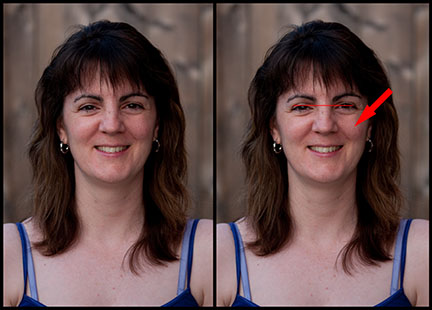


Generally, medications taken systemically will not cause anisocoria since both pupils will constrict or dilate but can cause anisocoria if the medication gets into only one eye. Small pupils may be caused by opiates, clonidine, organophosphates, pilocarpine, and prostaglandins. Dilating agents are nasal vasoconstrictors, scopolamine patches, glycopyrrolate deodorants, and various herbals, such as Jimson weed. Pharmacologic agents may cause both mydriasis, which is more common, and miosis. There are no cranial nerve palsies in tonic pupil cases. The diagnosis of a tonic pupil is usually clinical. Anatomical abnormalities may exist to cause this entity. The tonic pupil is often benign but may eventually become miotic. The affected pupil demonstrates a response with poor constriction to light but significantly better to accommodation this is referred to as light near dissociation. The pupil is large and more commonly occurs in young women. Tonic pupil, or Adie pupil, is a well-known cause of anisocoria. TNP is an example of a large, abnormal pupil. Magnetic resonance angiogram (MRA) has a threshold of 3 to 5mm and may indicate other pathologies. Diagnosis is radiological with computed tomogram (CT) or magnetic resonance imaging (MRI). Patients usually experience pain with this entity. The most well-known, life-threatening cause of TNP is a posterior communicating artery aneurysm causing pressure on the third nerve. Isolated pupillary dilation is not classically considered a third nerve palsy however, careful evaluation for subtle ptosis or abnormal extraocular movement is necessary to eliminate a TNP using this criterion. Important etiologies of anisocoria include third nerve palsy, Adie pupil, pharmacologic mydriasis, pharmacologic miosis, traumatic mydriasis, physiologic anisocoria, and Horner syndrome.Ī third nerve palsy (TNP) may spare the pupil or cause it to dilate with no reaction to light or convergence. This article highlights the neurological as well as the ophthalmological aspects of this condition. It can be physiological as well as pathological, occurring due to numerous causes, ranging from benign to life-threatening. This phenomenon results due to disturbances in the efferent pathway dynamics. Anisocoria is characterized by a difference in pupil sizes. Explain the importance of improving care coordination among interprofessional team members to improve outcomes for patients affected by anisocoria.Īnisocoria is a term derived from two Greek words, “ aniso-” meaning unequal, “kore” meaning pupil, and a Latin suffix “ia” meaning abnormal condition.Outline the treatment and management options available for anisocoria.Describe the evaluation of a patient with anisocoria.
One pupil larger than other how to#
This activity examines when anisocoria should be considered on differential diagnosis and how to evaluate it properly and highlights the role of the interprofessional team in caring for patients with this condition. Potential etiologies of anisocoria include systemic drug use, topical ophthalmic drug use, headaches, trauma, ophthalmologic diseases, and autonomic ganglion pathology. The etiology of anisocoria is complex, ranging from benign to potentially life-threatening causes. Anisocoria is a condition characterized by unequal pupil size.


 0 kommentar(er)
0 kommentar(er)
